The Magic of Camping in California
Camping in California: A Nature Lover’s Paradise
California, the Golden State, is renowned for its stunning landscapes, and what better way to experience the great outdoors than by camping? This article will guide you through the magnificent world of camping in California, from planning your trip to enjoying the diverse natural beauty and wildlife.
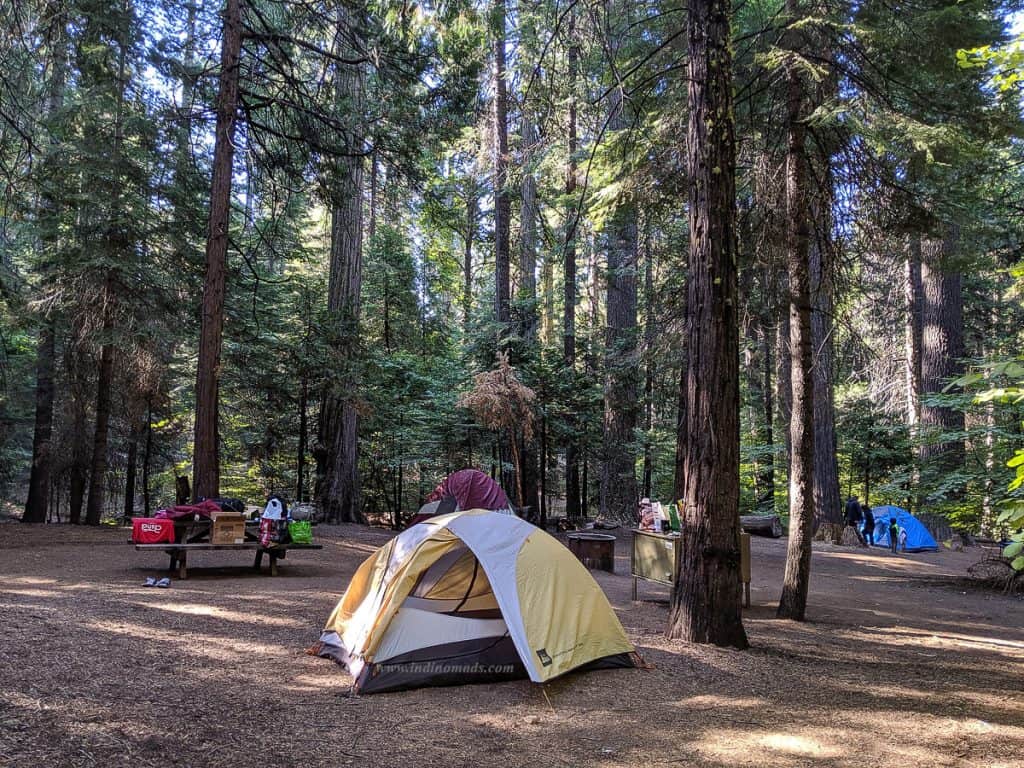
Before you read ahead, if you are brand new to camping and would like to learn Pro tips, check out this article.
For families camping with kids, check out Top Family Camping Destinations in Northern California
Planning Your California Camping Trip
Research and Destination Selection
Before embarking on your camping adventure, it’s essential to research the wide array of options California offers. Whether you prefer the rugged coastline, lush forests, serene deserts, or towering mountains, California has it all. Research different camping destinations, taking into account the terrain, climate, and activities available.
Permits and Reservations
Many popular camping spots in California require permits and reservations. It’s crucial to check for availability and secure your spot well in advance, especially during peak seasons. State and national parks often have limited camping sites, so planning ahead is key to a successful trip.
1. ReserveCalifornia is the official reservation system for California State Parks. It allows you to browse and book campsites in various state parks across California.
2. Recreation.gov is a comprehensive federal reservation website that covers campgrounds in national parks, national forests, and other federal lands. It includes campgrounds in California’s national parks and forests.
3. National Park Service (NPS): For camping in California’s national parks, you can also check the National Park Service’s official website. It provides information on campgrounds and reservations for parks like Yosemite, Joshua Tree, and more.
4. California Department of Forestry and Fire Protection (CAL FIRE): CAL FIRE offers camping opportunities in state forests and other areas. You can find information about campgrounds and reservations on their website.
5. Bureau of Land Management (BLM): If you’re interested in camping on public lands managed by the Bureau of Land Management, their website provides details on campgrounds and permits.
6. California Beaches: For those looking for beach camping in California, the California Beaches website provides information on beachside campgrounds, including availability and reservations.
7. County and Regional Parks: Many counties and regions in California have their own park systems with campgrounds. You can often find information about these campgrounds and reservations on the respective county or regional park websites. These may vary by location, so search for the specific county or region where you plan to camp.
When using these websites, you can check campsite availability, make reservations, and ensure a smooth camping experience in California’s beautiful natural settings. Be sure to book well in advance, especially for popular campgrounds, as they can fill up quickly, particularly during peak camping seasons.
Best Campgrounds in California
Coastal Camping Spots
California’s coastline offers some of the most picturesque camping locations. Enjoy the sound of crashing waves and breathtaking sunsets at places like Big Sur, Crystal Cove, and Santa Cruz. Beach camping is a unique experience you won’t want to miss.
Mountain Getaways
For those seeking a cooler escape, California’s mountain regions provide a variety of camping options. Explore the Sierra Nevada mountains, where you can camp near pristine lakes and hike in the shadow of towering pines. Yosemite National Park and Lake Tahoe are must-visit destinations.
Desert Adventures
California’s deserts offer a stark but beautiful contrast to its coastal and mountain regions. Joshua Tree National Park and Anza-Borrego Desert State Park provide unique desert camping experiences with stargazing opportunities and desert flora and fauna.
Check out my top 20 State Park Camping in California and top 20 National Forest Camping in California.

Camping Activities and Attractions
Hiking and Nature Trails
Camping in California means access to incredible hiking trails. From the Pacific Crest Trail to the Lost Coast Trail, there are options for every skill level. Don’t forget to explore the diverse flora and fauna along the way.
Water Activities
If you love water-based activities, California has it all. Kayak in Lake Tahoe, go white-water rafting on the American River, or enjoy a relaxing day by the ocean.
Wildlife Watching
California’s diverse landscapes are teeming with wildlife. Keep an eye out for black bears, mule deer, and various bird species. Responsible wildlife watching and photography are essential to protect these natural wonders.
Camping Gear and Supplies
Having the right gear is fundamental to an enjoyable camping experience. Make a checklist of camping essentials, including a tent, sleeping bags, cooking equipment, and appropriate clothing. Don’t forget to bring essentials like a first aid kit, navigation tools, and communication devices for safety.
Family tent with highest rating and a best seller on Amazon:
A great backpacking tent, this is available in both 2 person and 4 person versions. It’s pretty light weight and versatile.
Sleeping Bags and Sleeping Pads: If you sleep cold at night, its worth every penny to invest in at least a zero degree sleeping bag, if not a negative temp. I personally sleep very cold at night. I wear two layers, socks and still feel cold outside in spring and fall. Summer in California doesn’t require that much insulation. But, for our family we use a Zero degree sleeping bag for all seasons and it works great.
Some people prefer inflatable mattress, especially for car camping. We have not personally done that. But, if you would rather have an air mattress, its totally a viable option.
For the rest of the camping gear, continue to read. I have an entire section covering packing list including stove, cooking and food options.
Camping Tips for Beginners
Campfire Safety
Campfires are a beloved camping tradition. Learn how to build and maintain a safe campfire, following park regulations and fire restrictions.
Setting Up Camp
Master the art of setting up your campsite efficiently. Know the Leave No Trace principles and ensure you leave your campsite as you found it.
Leave No Trace Principles
Responsible camping means minimizing your impact on the environment. Follow Leave No Trace guidelines by disposing of waste properly and respecting the flora and fauna around you.

California Camping Cuisine
Campfire Cooking Tips
For exciting Recipes, check out here: Delicious Campfire Recipes – Feast Under the Stars
Cooking over an open flame is an art. Discover tips for successful campfire cooking and indulge in delicious meals under the stars.
Campfire cooking can be a delightful experience, turning a simple meal into a culinary adventure. Here are some campfire cooking tips to help you make delicious meals over an open flame during your camping trip:
1. **Safety First:**
Before you start cooking, ensure you have a safe and controlled campfire. Follow any fire regulations and use designated fire rings or pits if available. Keep a bucket of water or a fire extinguisher nearby for emergencies.
2. **Gather the Right Equipment:**
Pack essential cooking gear, including a campfire grill grate, a set of long tongs, heavy-duty aluminum foil, and a cast iron skillet or Dutch oven. These tools will make cooking over a campfire much easier.
3. **Prepare Your Ingredients:**
Prepping your ingredients before you start cooking is crucial. Chop vegetables, marinate meat, and measure seasonings at home to minimize food preparation at the campsite. Store everything in sealed containers or bags to keep it fresh.
4. **Use the Right Firewood:**
Choose seasoned hardwood for your campfire, as it burns hotter and longer. Avoid softwoods like pine, which can create excessive soot and burn too quickly.
5. **Build a Good Fire:**
Create a stable base of dry twigs, newspaper, or fire starter beneath your firewood. Arrange the firewood in a teepee or log cabin style to allow air to flow. Once the fire is established, let it burn down to hot coals for even cooking.
6. **Adjust the Height:**
If your campfire has adjustable grill grates, set the height to control the cooking temperature. Lower the grate for higher heat and raise it for lower heat.
7. **Use Foil Packets:**
Foil packets are your best friend when campfire cooking. Wrap ingredients like vegetables, meat, and seasonings in heavy-duty aluminum foil. These packets are easy to cook and prevent food from falling into the fire.
8. **Cast Iron Cooking:**
Cast iron skillets or Dutch ovens are excellent for campfire cooking. They distribute heat evenly and can handle high temperatures. Pre-season the cast iron cookware to prevent sticking.
9. **Embrace One-Pot Meals:**
Simplify your campfire cooking by preparing one-pot meals. Combine all your ingredients in a single pot or Dutch oven, like stews or chili, for a hearty and easy dinner.
10. **Flip and Stir:**
Pay close attention to your food, turning and stirring it regularly to ensure even cooking. Use long tongs or a campfire-safe utensil to avoid getting too close to the fire.
11. **Check Doneness:**
Use a meat thermometer to check the doneness of meat to ensure it’s cooked to a safe temperature. Also, cut into thicker pieces to ensure they are fully cooked inside.
12. **Pack Out What You Bring In:**
Practice Leave No Trace ethics by properly disposing of your food scraps and packaging. Pack out all waste and trash to leave the campsite as pristine as you found it.
13. **Experiment and Have Fun:**
Campfire cooking is an opportunity to get creative with your meals. Try new recipes and techniques, and don’t be afraid to experiment with flavors and ingredients.
By following these campfire cooking tips, you can enjoy delicious and memorable meals while camping in the great outdoors.
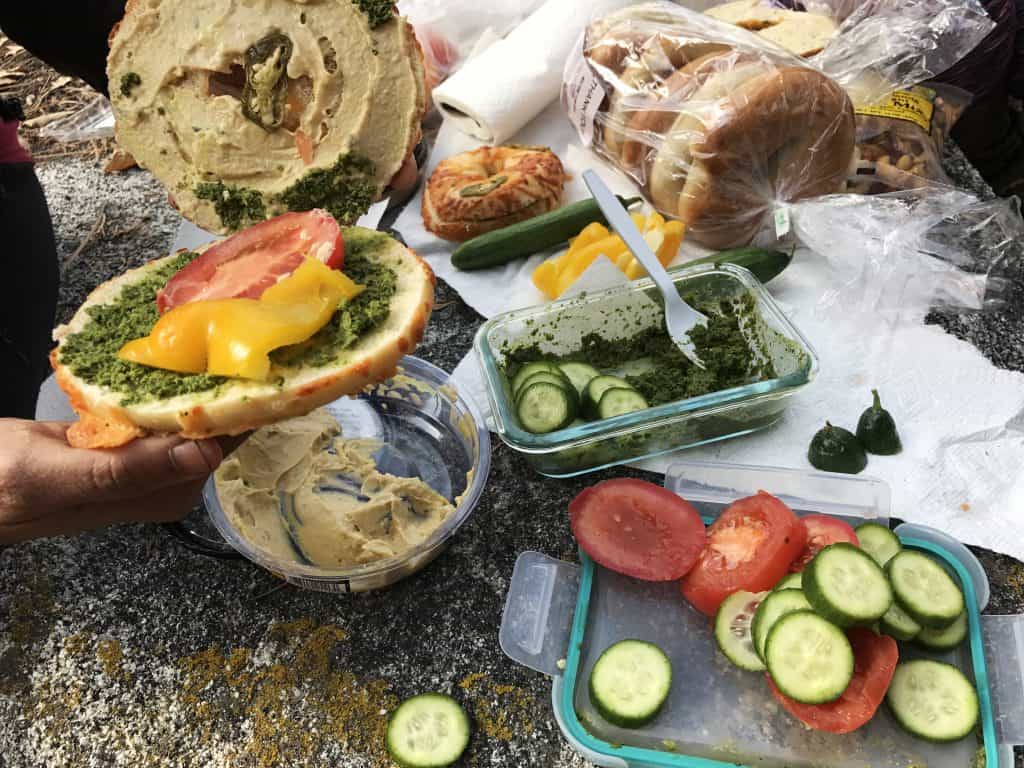
Camping Recipes
From s’mores to foil packet dinners, camping food is diverse and exciting. Learn some easy and tasty recipes to elevate your camping cuisine.
First and foremost option for camping / backpacking that we go for is making our own dehydrated food. We love our dehydrated Indian food on the hiking trails. Check out my article on my top dehydrated Dhal Recipe.
Here are ten delicious camping recipes that are easy to prepare and perfect for enjoying in the great outdoors:
1. **Campfire Tacos:**
– Brown ground beef with taco seasoning at home and pack it in a container.
– On campfire grates, warm up tortillas.
– Top with seasoned meat, shredded cheese, diced tomatoes, and any other favorite toppings.
2. **Foil Packet Potato Hash:**
– Dice potatoes, onions, and bell peppers.
– Season with salt, pepper, and olive oil.
– Create a foil packet and cook it on campfire grates until the veggies are tender.
3. **Grilled Chicken Skewers:**
– Marinate chicken pieces in your favorite sauce or marinade at home.
– Thread the chicken onto skewers.
– Grill over the campfire until cooked through.
4. **Campfire Quesadillas:**
– Place a tortilla on a piece of foil.
– Add cheese, cooked chicken, veggies, and another tortilla.
– Wrap in foil and heat over the fire until the cheese melts.
5. **One-Pot Pasta:**
– Boil pasta in a pot with water, then drain.
– Add canned tomato sauce, cooked ground beef, and your favorite seasonings.
6. **Hobo Stew:**
– Layer ground beef, potatoes, carrots, and onions in foil packets.
– Season with salt, pepper, and a bit of butter.
– Cook on the campfire until everything is tender.
7. **Grilled Corn on the Cob:**
– Peel back corn husks and remove silk.
– Replace husks and soak in water for 10 minutes.
– Grill on the campfire grates, turning occasionally, until tender.
8. **S’mores Cones:**
– Fill a waffle cone with mini marshmallows, chocolate chips, and crumbled graham crackers.
– Wrap in foil and heat on the campfire until everything melts.
9. **Campfire Breakfast Burritos:**
– Scramble eggs and cook bacon or sausage at home.
– Warm tortillas on campfire grates.
– Fill with eggs, meat, cheese, and your favorite toppings.
10. **Banana Boat Sundaes:**
– Slice a banana down the middle without peeling.
– Fill the slit with mini marshmallows and chocolate chips.
– Wrap in foil and heat on the campfire until everything is gooey.
These camping recipes are versatile, easy to prepare, and sure to satisfy your appetite while enjoying the great outdoors. You can adapt them to your tastes and dietary preferences, making your camping meals a delicious and memorable part of your trip.
Checkout Campfire Cooking Tips – Everything You Need to Know !
Local Food Experiences
Don’t forget to explore the local food scene. Visit nearby farmers’ markets, taste regional dishes, and enjoy a culinary adventure.
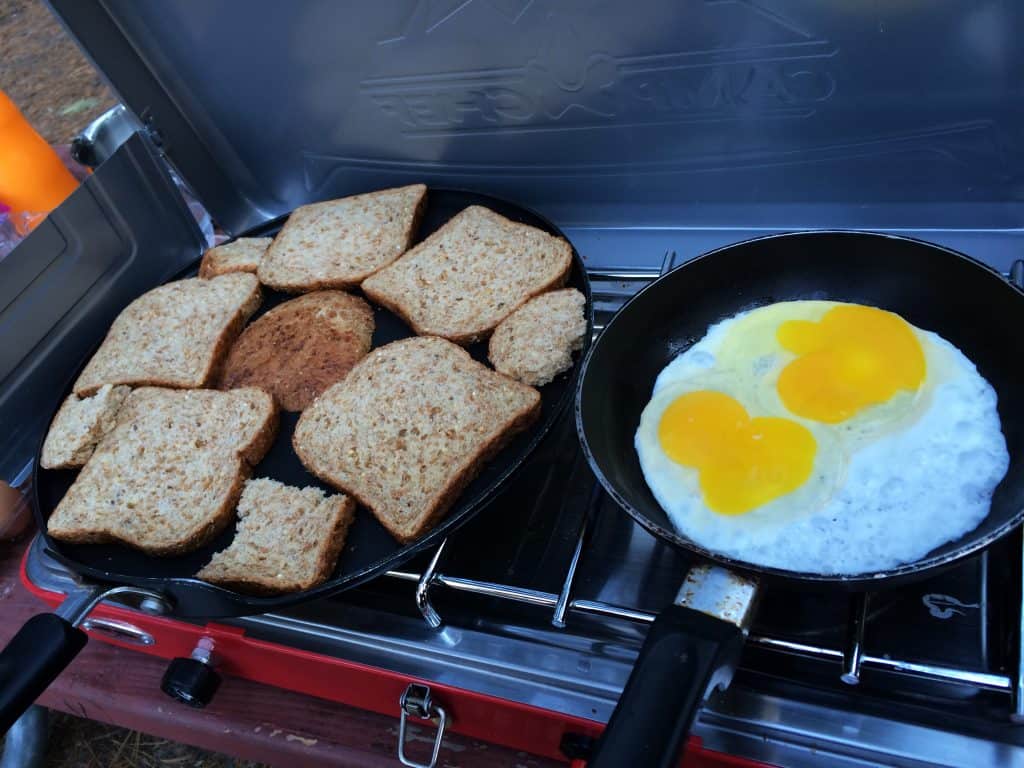
Camping in Different Seasons
Spring and Summer Adventures
California’s mild climate makes spring and summer ideal for camping. Enjoy warm days, cool nights, and blooming wildflowers.
Fall Foliage Camping
Witness the breathtaking fall foliage in places like the Eastern Sierra and the wine country. Experience California’s autumn charm while camping.
Winter Camping and Snow Activities
For snow enthusiasts, California offers snowy adventures in the high Sierra. Go snowshoeing, cross-country skiing, or even winter camping for a unique experience.
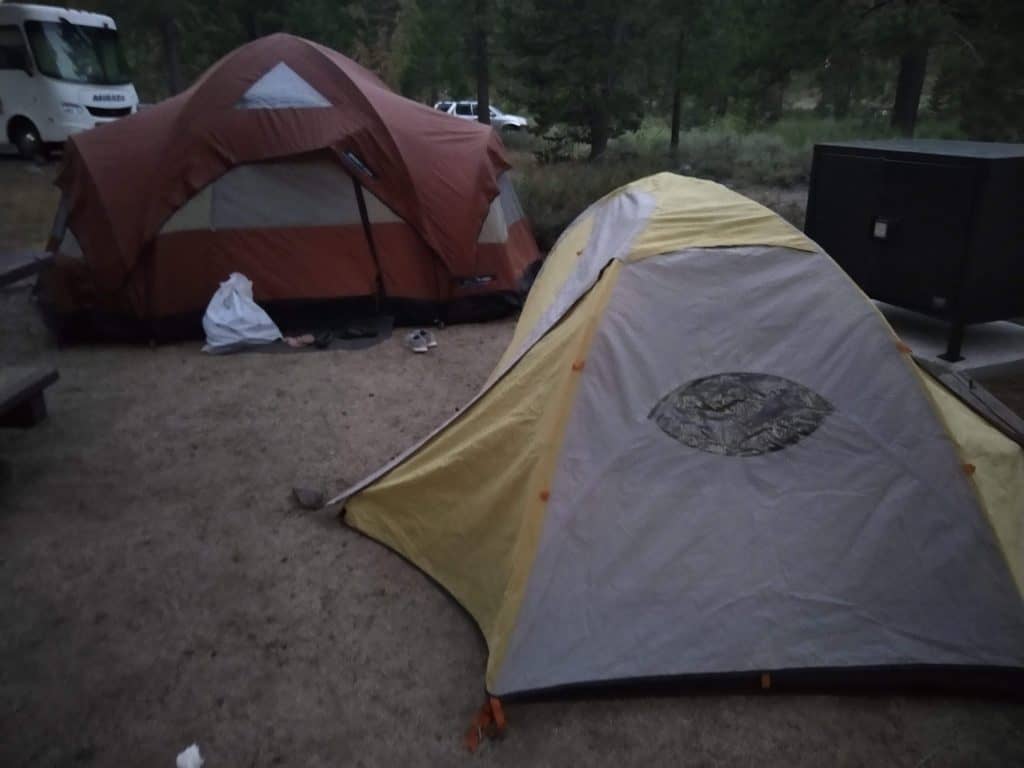
Safety and Emergency Preparedness
First Aid and Medical Supplies
Accidents can happen, so always carry a well-stocked first aid kit. Be prepared for minor injuries and illnesses.
When camping, it’s essential to be prepared for minor injuries and illnesses. Here’s a list of first aid and medical supplies to pack for a camping trip:
1. **First Aid Kit:** Start with a compact and well-organized first aid kit that includes the following essentials:
– Band-aids (assorted sizes)
– Sterile gauze pads and adhesive tape
– Antiseptic wipes or solution
– Tweezers and scissors
– Pain relievers (e.g., aspirin, ibuprofen)
– Antihistamines for allergic reactions
– Adhesive bandages for blisters
– Sterile gloves
– Thermometer
– CPR face shield or mask
– Tweezers for removing splinters or ticks
2. **Prescription Medications:** If you have any prescribed medications, ensure you have an adequate supply for your trip. Don’t forget to pack extra in case of unexpected delays.
3. **Personal Medications:** Over-the-counter medications for common ailments, such as:
– Antacids for indigestion
– Anti-diarrheal medication
– Laxatives or stool softeners
– Allergy medication
– Eye drops
– Insect bite or sting relief
4. **Wound Care Supplies:** In addition to your first aid kit, pack wound care supplies like:
– Sterile saline solution for cleaning wounds
– Antibiotic ointment
– Sterile adhesive strips or butterfly closures
– Sterile cotton balls and swabs
– Elastic bandages and wraps
5. **Personal Hygiene Items:** Include personal hygiene items, such as soap, hand sanitizer, and disposable wipes, to maintain cleanliness and prevent infection.
6. **EpiPen (if applicable):** If you have severe allergies, bring your EpiPen or prescribed epinephrine auto-injector and ensure that it’s not expired.
7. **Pain Relief and Anti-Inflammatory Medications:** Pack pain relievers like acetaminophen or ibuprofen for headaches, muscle aches, or minor injuries.
8. **Sun Protection:** Include sunscreen with a high SPF, lip balm with sunblock, and a wide-brimmed hat to protect against sunburn.
9. **Insect Repellent:** Bug spray to protect against mosquito bites and ticks. Consider natural or DEET-free options if you prefer.
10. **Emergency Contact Information:** Make sure you have a list of emergency contact numbers, including a nearby medical facility or ranger station.
11. **Tweezers and Tick Removal Tool:** Essential for safely removing splinters and ticks.
12. **Ace Bandages or Compression Wraps:** Useful for sprains or strains.
13. **Blister Treatment:** Moleskin or specialized blister bandages can help prevent and treat blisters.
14. **Burn Cream or Gel:** For minor burns, including sunburn.
15. **Digital Thermometer:** To monitor your body temperature in case of fever or illness.
16. **Medical Documentation:** Carry a copy of your medical history, allergies, and any existing medical conditions.
17. **Survival Blanket:** Can serve as a makeshift blanket or signal for help.
18. **Safety Pins:** Handy for various uses, such as securing bandages or gear repairs.
19. **Emergency Whistle:** Can be used to signal for help in case of an emergency.
20. **Personal Identification:** Carry a copy of your ID, insurance card, and contact information in case of emergency.
21. **Oral Rehydration Solution:** Useful for treating dehydration.
Remember that a well-prepared first aid kit is essential for addressing minor injuries and illnesses while camping. Keep your kit well-maintained, periodically check expiration dates, and replenish any used or expired items before each camping trip.
Weather Awareness
Weather conditions can change rapidly, so stay informed and prepared for various weather scenarios. Always check the forecast before your trip.
Navigation and Communication
Know how to use a map and compass for navigation. Ensure you have a reliable means of communication, like a satellite phone or personal locator beacon.

Leave No Trace Ethics
Understanding LNT
Delve deeper into the Leave No Trace principles, including respecting wildlife, minimizing campfire impact, and leaving the environment pristine.
How to Practice LNT While Camping
Learn practical ways to practice Leave No Trace, such as packing out all trash, disposing of human waste correctly, and respecting wildlife.
The Importance of LNT
Understand why Leave No Trace is crucial for preserving California’s natural beauty for future generations.
Wildlife Encounters
Bears and Wildlife Safety
Discover how to safely coexist with bears and other wildlife. Learn about bear-resistant food containers and proper storage.
Bird Watching Opportunities
California is a haven for bird watchers. Explore the best spots for bird watching and immerse yourself in the world of avian wonders.
Responsible Wildlife Photography
If you’re a wildlife photography enthusiast, understand the ethical considerations when photographing wildlife.

Camping with Family and Kids
Family-Friendly Campgrounds
Also check out details on How to Choose the Right Tent for Camping.
Explore campgrounds that cater to families, with kid-friendly amenities and activities. Enjoy quality family time in the great outdoors.
California offers numerous family-friendly campgrounds, each with its unique charm and outdoor activities. Here are my top 10 family-friendly campgrounds in California:
For an extensive list of best campsites in California State parks, check out this article.
1. **D.L. Bliss State Park Campground:**
Located on Lake Tahoe’s western shore, this campground offers stunning lake views, hiking trails, and a beautiful sandy beach for swimming.
2. **Pfeiffer Big Sur State Park Campground:**
Nestled in the heart of Big Sur, this campground is surrounded by towering redwoods. Enjoy nature walks and explore the nearby McWay Falls.
3. **Leo Carrillo State Park Campground:**
Situated along the Malibu coast, this campground provides easy beach access, tide pools for exploring, and fantastic family-friendly hiking trails.
4. **Crystal Cove State Park Moro Campground:**
This coastal gem offers historic beach cottages for rent and campsites for those who want a more traditional camping experience. It’s perfect for tidepooling and relaxing by the beach.
5. **Carpinteria State Beach Campground:**
Located near Santa Barbara, this campground has a wide sandy beach, a seal rookery, and a nearby coastal marsh for birdwatching.
6. **Doheny State Beach Campground:**
This oceanfront campground in Dana Point offers water activities, including swimming, surfing, and tidepool exploration.
7. **Humboldt Redwoods State Park Albee Creek Campground:**
In the heart of the Avenue of the Giants, this campground immerses you in the world’s tallest trees. Enjoy hiking and exploring the redwood forest.
8. **Refugio State Beach Campground:**
This beachfront campground offers calm waters for swimming, kayaking, and picnicking under the palm trees.
9. **Camping in Yosemite National Park:**
Yosemite has several campgrounds suitable for families, including Upper Pines, Wawona, and Hodgdon Meadow, all surrounded by iconic natural beauty.
Also check out our Yosemite Pohono Trail Guide.
10. **San Elijo State Beach Campground:**
Situated in San Diego County, this campground offers beachfront campsites, excellent surfing, and a laid-back Southern California vibe.
Remember to book your campsite well in advance, especially for popular campgrounds, as they tend to fill up quickly, particularly during peak camping seasons. These family-friendly campgrounds in California provide a wonderful opportunity to bond with nature and create lasting memories with your loved ones.
Campfire Stories and Games
Engage your children with campfire stories and games that create lasting memories.
Campfire stories and games are a great way to keep kids entertained and create lasting memories during camping trips. Here are some fun and age-appropriate ideas:
**Campfire Stories:**
1. **Classic Ghost Stories:** Share age-appropriate spooky tales about friendly ghosts or campfire apparitions, making sure they are not too scary for the little ones.
2. **Nature’s Secrets:** Encourage kids to tell stories about the animals and plants they encountered during the day. These can be tales of forest creatures or magical plants.
3. **Silly Stories:** Create a collaborative story where each person adds a sentence or two, building a whimsical and humorous narrative.
4. **Personal Adventure:** Have each child share their favorite camping memory from the trip, allowing them to describe their adventure in their own words.
5. **Campfire Songs:** Singing campfire songs can be as enjoyable as telling stories. Encourage kids to sing along, and you can even bring a guitar or a portable speaker for music.
**Campfire Games:**
6. **I Spy:** Play a game of “I Spy” by taking turns describing something you see or hear in the darkness, and others have to guess what it is.
7. **20 Questions:** Think of an object, and the others can ask up to 20 yes-or-no questions to guess what it is.
8. **Shadow Puppets:** Use a flashlight or the campfire to create shadow puppets on the tent or a nearby surface. Kids can take turns making different shapes and animals.
9. **Campfire Charades:** Act out animals, objects, or activities without speaking, and the others have to guess what you’re miming.
10. **Scavenger Hunt:** Organize a mini scavenger hunt during the day, and at night, discuss the interesting items or experiences everyone found.
11. **Story Cubes:** Create story cubes by drawing simple images on small wooden blocks. Take turns rolling the cubes and incorporating the images into a collective story.
12. **Flashlight Tag:** In the dark, play a game of flashlight tag. One child holds a flashlight and tries to “tag” others by shining the light on them.
13. **Campfire Pictionary:** Bring a small whiteboard and markers. Take turns drawing something related to camping, and the others guess what it is.
14. **Stump the Stars:** Lay back and stargaze. Ask kids to spot and name constellations, planets, and stars. Make it a contest to see who can identify the most.
15. **Camping Trivia:** Prepare a list of fun camping-related trivia questions and test the kids’ knowledge. Offer small prizes for correct answers.
Remember to adapt the stories and games to the age and preferences of the kids. The goal is to make the campfire experience enjoyable, educational, and memorable for everyone involved.
Creating Lasting Memories
Camping with family and kids is an opportunity to bond and make cherished memories. Learn how to make the most of your family camping trips.
California Camping and Environmental Conservation
Environmental Impact of Camping
Understand the environmental impact of camping and how you can reduce it.
Volunteering and Giving Back
Learn about opportunities to give back to the environment through volunteering or supporting conservation organizations.
Sustainability Efforts
Explore sustainable camping practices, such as minimizing waste and conserving resources.
Packing List and Essentials
When going camping with your family, especially with children, careful planning and packing are essential to ensure a safe and enjoyable experience. Here’s a comprehensive packing list of essentials for a family camping trip:
**Shelter and Sleeping:**
1. Tent with rainfly, stakes, and guylines (consider a family-sized tent).
2. Ground tarp or footprint to protect the tent floor.
3. Sleeping bags suitable for the season and climate.
4. Sleeping pads or air mattresses for comfort.
5. Pillows or stuff sacks with clothing for makeshift pillows.
**Clothing:**
6. Weather-appropriate clothing (layers are key) for everyone, including extra clothes for children.
7. Waterproof and windproof jackets.
8. Hats, gloves, and scarves for colder weather.
9. Sturdy, comfortable hiking boots or shoes.
10. Extra socks and underwear.
11. Pajamas or sleepwear.
12. Swimwear (if applicable).
13. Sandals or camp shoes for around the campsite.
**Food and Cooking:**
14. Portable camping stove and fuel.
15. Cookware (pots, pans, utensils).
16. Plates, bowls, and cups.
17. Portable coffee maker (if needed).
18. Cooking utensils (spatula, tongs, etc.).
19. Biodegradable soap and sponge for dishwashing.
20. Food and beverages (plan meals in advance).
21. Cooler with ice packs (if needed).
22. Water containers or hydration system.
23. Campfire supplies (firewood, fire starter, matches).
**Personal and Hygiene Items:**
24. Personal identification and contact information.
25. First aid kit.
26. Prescription medications (if applicable).
27. Hygiene items (toothbrush, toothpaste, soap, etc.).
28. Toilet paper and trowel for digging a latrine (if no restrooms).
29. Insect repellent and sunscreen.
30. Towels (microfiber towels are lightweight and quick-drying).
31. Hand sanitizer.
32. Baby wipes for quick clean-ups.
**Entertainment and Safety:**
33. Maps, compass, or GPS device.
34. Multitool or camping knife.
35. Flashlights or headlamps with extra batteries.
36. Camping lantern for the campsite.
37. Backpacks or daypacks for day hikes.
38. Binoculars for wildlife watching.
39. Notebook and pen for journaling or sketching.
40. Whistle and signal mirror for safety.
41. Fully charged cell phones and a backup power source.
**Kids and Family-Specific Items:**
42. Child carriers or hiking backpacks (for young children).
43. Baby gear (diapers, wipes, baby food, etc.).
44. Kids’ clothing, including extras and layers.
45. Toys, games, and activities for children.
46. Sunscreen and insect repellent suitable for kids.
47. Child identification and medical information.
**Miscellaneous:**
48. Trash bags for waste and recycling.
49. Duct tape for quick repairs.
50. Camp chairs or portable seating.
51. Camping permits and reservations (if needed).
52. Campsite reservation confirmations.
53. Cash and small change (for entrance fees, if required).
54. Camping guidebook or relevant park maps.
55. Reusable bags for collecting firewood, foraging, or other uses.
If you are curious about how we pack for our international camping trips, checking my Patagonia backpacking packing list.
Before your trip, customize this list based on the specific needs of your family, the destination, and the duration of your camping adventure. Ensure you pack all essentials to keep everyone comfortable and safe during your camping experience.
Camping in California is a magical experience that allows you to connect with nature in some of the most beautiful landscapes in the world. Whether you’re a seasoned camper or a beginner, California offers a wealth of camping opportunities for every nature lover. Get out there, explore, and make lasting memories.
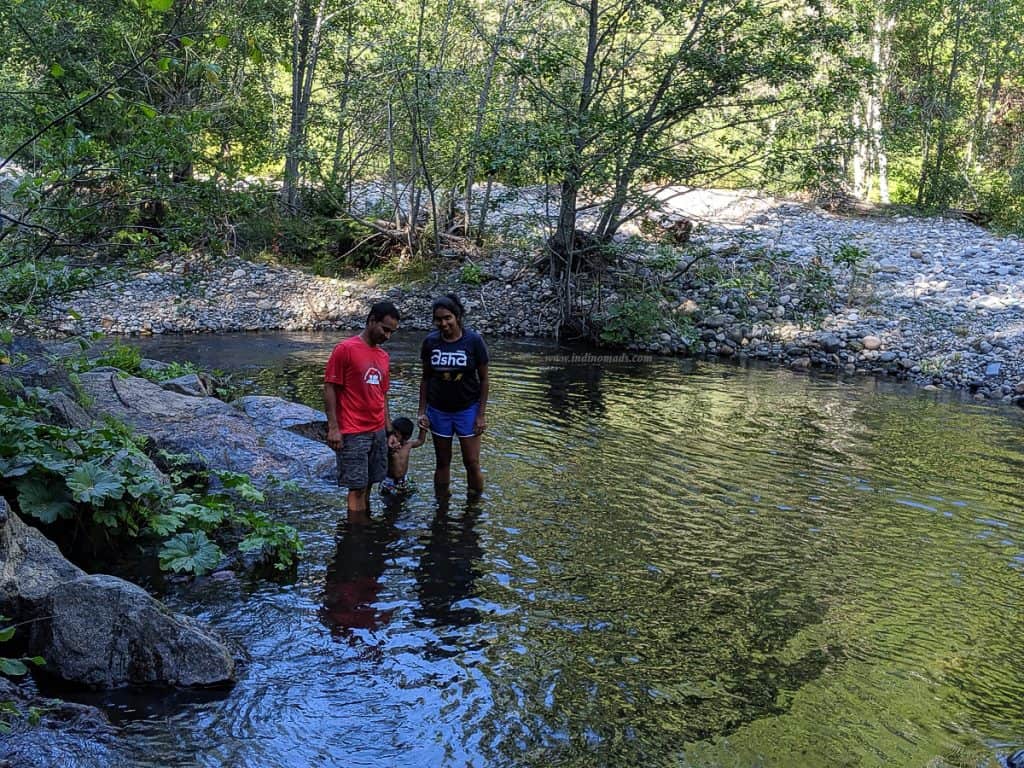
FAQs (Frequently Asked Questions)
Q1: Do I need a camping permit for all campgrounds in California?
– A1: Not for all, but many popular campgrounds require permits. It’s essential to check for specific requirements at your chosen destination.
Q2: What is the best time of year to go camping in California?
– A2: Spring and summer are ideal for most regions, but fall and winter offer unique experiences in some areas. It depends on your preferences.
Q3: How can I stay safe from wildlife while camping in California?
– A3: Follow bear and wildlife safety guidelines, use bear-resistant food containers, and never feed wildlife.
Q4: Are there any camping spots in California suitable for beginners?
– A4: Yes, there are plenty of beginner-friendly campgrounds. Look for sites with well-maintained facilities and easier hiking trails.
Also Read:
Top 10 Camping Destinations in Northern California
20 Must-Visit National Forest Campgrounds in California
